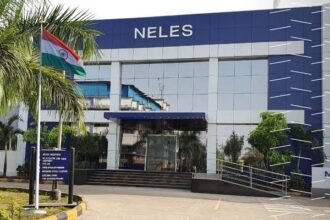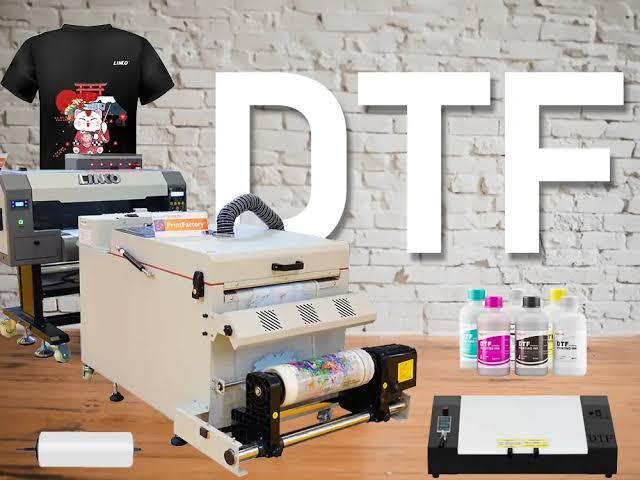Direct-to-Film (DTF) printing has emerged as a game-changer in the world of custom apparel and textile printing. This innovative printing method offers a cost-effective, versatile, and high-quality solution for small businesses looking to expand their product offerings. Whether you’re a startup, a home-based business, or an established small enterprise, investing in the right DTF printer can significantly impact your success. This comprehensive guide will explore the best DTF printers for small businesses, their features, benefits, and how to choose the right one for your needs.
1. Introduction to DTF Printing
1.1 What is DTF Printing?
Direct-to-Film (DTF) printing is a digital printing method that involves printing designs onto a special film, which is then transferred onto fabric using a heat press. Unlike traditional printing methods like screen printing or Direct-to-Garment (DTG) printing, DTF printing offers greater flexibility, allowing you to print on a wide range of fabrics, including cotton, polyester, and blends.
1.2 How Does DTF Printing Work?
The DTF printing process involves several steps:
- Design Creation: Create or upload your design using graphic design software.
- Printing: Print the design onto a special DTF film using a DTF printer.
- Powder Application: Apply a adhesive powder to the printed film to ensure the design adheres to the fabric.
- Curing: Heat the film to cure the powder and prepare it for transfer.
- Transfer: Use a heat press to transfer the design from the film onto the fabric.
- Finishing: Allow the fabric to cool and remove any excess powder.
1.3 Advantages of DTF Printing
- Versatility: DTF printing can be used on a wide range of fabrics, including cotton, polyester, and blends.
- High-Quality Prints: DTF printing produces vibrant, durable, and high-resolution prints.
- Cost-Effective: DTF printing is more affordable than traditional printing methods, especially for small runs.
- Ease of Use: DTF printing is relatively easy to learn and operate, making it ideal for small businesses.
- Customization: DTF printing allows for easy customization, making it perfect for personalized apparel and promotional items.
2. Why DTF Printing is Ideal for Small Businesses
2.1 Low Startup Costs
One of the biggest advantages of DTF printing for small businesses is the low startup costs. Unlike traditional printing methods that require expensive equipment and setup, DTF printing requires only a DTF printer, a heat press, and some basic supplies. This makes it an accessible option for small businesses with limited budgets.
2.2 High-Quality Output
DTF printing produces high-quality, vibrant, and durable prints that rival traditional printing methods. This is especially important for small businesses that need to compete with larger competitors and deliver professional-quality products to their customers.
2.3 Versatility
DTF printing offers unparalleled versatility, allowing small businesses to print on a wide range of fabrics and garments. This opens up new opportunities for product offerings, from custom t-shirts and hoodies to bags, hats, and more.
2.4 Customization
Customization is a key trend in the apparel industry, and DTF printing makes it easy for small businesses to offer personalized products. Whether it’s custom designs, names, or logos, DTF printing allows for quick and easy customization, helping small businesses attract and retain customers.
2.5 Scalability
DTF printing is highly scalable, making it suitable for small businesses of all sizes. Whether you’re just starting out or looking to expand your operations, DTF printing can grow with your business, allowing you to take on larger orders and new markets.
3. Key Features to Look for in a DTF Printer
3.1 Print Quality
Print quality is one of the most important factors to consider when choosing a DTF printer. Look for a printer that offers high resolution (at least 1200 dpi) and produces vibrant, durable prints.
3.2 Speed
Print speed is another important consideration, especially for small businesses that need to fulfill orders quickly. Look for a printer that offers a balance between speed and quality.
3.3 Ink Compatibility
DTF printers use specialized inks that are designed to adhere to the film and fabric. Make sure the printer you choose is compatible with high-quality DTF inks that produce vibrant and durable prints.
3.4 Ease of Use
Ease of use is crucial for small businesses that may not have extensive technical expertise. Look for a printer that is user-friendly, with intuitive controls and easy-to-follow instructions.
3.5 Maintenance
DTF printers require regular maintenance to ensure optimal performance. Look for a printer that is easy to maintain, with accessible components and clear maintenance instructions.
3.6 Cost of Ownership
Consider the total cost of ownership, including the initial purchase price, ink costs, maintenance, and any additional supplies. Choose a printer that offers a good balance between cost and performance.
3.7 Support and Warranty
Finally, consider the level of support and warranty offered by the manufacturer. Look for a printer that comes with a comprehensive warranty and access to reliable customer support.
4. Top DTF Printers for Small Businesses
4.1 Epson SureColor F2100
Overview: The Epson SureColor F2100 is a popular choice for small businesses looking for a reliable and high-quality DTF printer. It offers excellent print quality, fast print speeds, and ease of use.
Key Features:
- High resolution (1440 x 1440 dpi)
- Fast print speeds (up to 24 square feet per hour)
- Compatible with Epson DTF inks
- User-friendly interface
- Easy maintenance
Pros:
- Excellent print quality
- Fast print speeds
- Easy to use and maintain
- Reliable performance
Cons:
- Higher initial cost
- Limited to Epson inks
Best For: Small businesses looking for a high-quality and reliable DTF printer.
4.2 Brother GTX
Overview: The Brother GTX is a versatile DTF printer that offers excellent print quality and fast print speeds. It is designed for small to medium-sized businesses and is known for its reliability and ease of use.
Key Features:
- High resolution (1200 x 1200 dpi)
- Fast print speeds (up to 30 square feet per hour)
- Compatible with Brother DTF inks
- User-friendly interface
- Easy maintenance
Pros:
- Excellent print quality
- Fast print speeds
- Easy to use and maintain
- Reliable performance
Cons:
- Higher initial cost
- Limited to Brother inks
Best For: Small to medium-sized businesses looking for a versatile and reliable DTF printer.
4.3 Ricoh Ri 100
Overview: The Ricoh Ri 100 is a compact and affordable DTF printer that is ideal for small businesses. It offers good print quality and is easy to use, making it a great option for startups and home-based businesses.
Key Features:
- High resolution (1200 x 1200 dpi)
- Moderate print speeds (up to 15 square feet per hour)
- Compatible with Ricoh DTF inks
- User-friendly interface
- Easy maintenance
Pros:
- Affordable price
- Good print quality
- Easy to use and maintain
- Compact design
Cons:
- Slower print speeds
- Limited to Ricoh inks
Best For: Small businesses and startups looking for an affordable and compact DTF printer.
4.4 Mimaki TS55-1800
Overview: The Mimaki TS55-1800 is a high-performance DTF printer that offers excellent print quality and fast print speeds. It is designed for small to medium-sized businesses and is known for its reliability and durability.
Key Features:
- High resolution (1440 x 1440 dpi)
- Fast print speeds (up to 40 square feet per hour)
- Compatible with Mimaki DTF inks
- User-friendly interface
- Easy maintenance
Pros:
- Excellent print quality
- Fast print speeds
- Reliable and durable
- Easy to use and maintain
Cons:
- Higher initial cost
- Limited to Mimaki inks
Best For: Small to medium-sized businesses looking for a high-performance and durable DTF printer.
4.5 Roland BN-20
Overview: The Roland BN-20 is a versatile DTF printer that offers excellent print quality and fast print speeds. It is designed for small to medium-sized businesses and is known for its reliability and ease of use.
Key Features:
- High resolution (1200 x 1200 dpi)
- Fast print speeds (up to 25 square feet per hour)
- Compatible with Roland DTF inks
- User-friendly interface
- Easy maintenance
Pros:
- Excellent print quality
- Fast print speeds
- Easy to use and maintain
- Reliable performance
Cons:
- Higher initial cost
- Limited to Roland inks
Best For: Small to medium-sized businesses looking for a versatile and reliable DTF printer.
4.6 HP Stitch S300
Overview: The HP Stitch S300 is a high-performance DTF printer that offers excellent print quality and fast print speeds. It is designed for small to medium-sized businesses and is known for its reliability and durability.
Key Features:
- High resolution (1200 x 1200 dpi)
- Fast print speeds (up to 35 square feet per hour)
- Compatible with HP DTF inks
- User-friendly interface
- Easy maintenance
Pros:
- Excellent print quality
- Fast print speeds
- Reliable and durable
- Easy to use and maintain
Cons:
- Higher initial cost
- Limited to HP inks
Best For: Small to medium-sized businesses looking for a high-performance and durable DTF printer.
4.7 Mutoh RJ-900X
Overview: The Mutoh RJ-900X is a versatile DTF printer that offers excellent print quality and fast print speeds. It is designed for small to medium-sized businesses and is known for its reliability and ease of use.
Key Features:
- High resolution (1200 x 1200 dpi)
- Fast print speeds (up to 30 square feet per hour)
- Compatible with Mutoh DTF inks
- User-friendly interface
- Easy maintenance
Pros:
- Excellent print quality
- Fast print speeds
- Easy to use and maintain
- Reliable performance
Cons:
- Higher initial cost
- Limited to Mutoh inks
Best For: Small to medium-sized businesses looking for a versatile and reliable DTF printer.
5. How to Choose the Right DTF Printer for Your Small Business
5.1 Assess Your Needs
Before choosing a DTF printer, assess your business needs, including the types of products you plan to offer, the volume of orders, and your budget. This will help you narrow down your options and choose a printer that meets your specific requirements.
5.2 Consider Print Quality
Print quality is one of the most important factors to consider when choosing a DTF printer. Look for a printer that offers high resolution and produces vibrant, durable prints.
5.3 Evaluate Print Speed
Print speed is another important consideration, especially if you need to fulfill orders quickly. Look for a printer that offers a balance between speed and quality.
5.4 Check Ink Compatibility
Make sure the printer you choose is compatible with high-quality DTF inks that produce vibrant and durable prints. Consider the cost of inks and their availability.
5.5 Consider Ease of Use
Ease of use is crucial for small businesses that may not have extensive technical expertise. Look for a printer that is user-friendly, with intuitive controls and easy-to-follow instructions.
5.6 Evaluate Maintenance Requirements
DTF printers require regular maintenance to ensure optimal performance. Look for a printer that is easy to maintain, with accessible components and clear maintenance instructions.
5.7 Consider the Total Cost of Ownership
Consider the total cost of ownership, including the initial purchase price, ink costs, maintenance, and any additional supplies. Choose a printer that offers a good balance between cost and performance.
5.8 Check Support and Warranty
Finally, consider the level of support and warranty offered by the manufacturer. Look for a printer that comes with a comprehensive warranty and access to reliable customer support.
6. Best Practices for DTF Printing
6.1 Use High-Quality Inks and Films
To achieve the best results, use high-quality DTF inks and films that are compatible with your printer. This will ensure vibrant, durable, and long-lasting prints.
6.2 Maintain Your Printer
Regular maintenance is essential to keep your DTF printer in optimal condition. Follow the manufacturer’s maintenance guidelines, clean the printer regularly, and replace any worn-out parts.
6.3 Optimize Your Designs
Optimize your designs for DTF printing by using high-resolution images and vector graphics. This will ensure sharp and detailed prints.
6.4 Test Your Prints
Before printing large batches, test your prints on a small sample to ensure the colors, resolution, and adhesion are correct. This will help you avoid costly mistakes.
6.5 Store Inks and Films Properly
Store your DTF inks and films in a cool, dry place to prevent them from degrading. Follow the manufacturer’s storage guidelines to ensure their longevity.
6.6 Monitor Print Quality
Regularly monitor the quality of your prints to identify any issues early. This will help you maintain consistent print quality and avoid customer complaints.
6.7 Stay Updated with Industry Trends
Stay updated with the latest trends and advancements in DTF printing to keep your business competitive. Attend industry events, read trade publications, and network with other professionals.
7. Common Challenges and How to Overcome Them
7.1 Print Quality Issues
Challenge: Print quality issues, such as faded colors or blurry images, can occur due to incorrect settings, low-quality inks, or poor design optimization.
Solution: Ensure you use high-quality inks and films, optimize your designs, and follow the manufacturer’s guidelines for print settings.
7.2 Printer Maintenance
Challenge: Regular maintenance is essential to keep your DTF printer in optimal condition, but it can be time-consuming and require technical expertise.
Solution: Follow the manufacturer’s maintenance guidelines, clean the printer regularly, and consider investing in a maintenance plan or service contract.
7.3 Ink Costs
Challenge: DTF inks can be expensive, and the cost can add up quickly, especially for high-volume printing.
Solution: Look for cost-effective ink options, buy in bulk, and optimize your designs to reduce ink usage.
7.4 Adhesion Issues
Challenge: Adhesion issues, such as the design not sticking properly to the fabric, can occur due to incorrect heat press settings or poor-quality films.
Solution: Ensure you use high-quality films, follow the manufacturer’s guidelines for heat press settings, and test your prints before large-scale production.
7.5 Customer Expectations
Challenge: Meeting customer expectations for high-quality, durable, and vibrant prints can be challenging, especially for small businesses.
Solution: Invest in a high-quality DTF printer, use premium inks and films, and regularly monitor and optimize your print quality.
8. Future Trends in DTF Printing
8.1 Increased Adoption of DTF Printing
As DTF printing continues to gain popularity, more small businesses are expected to adopt this technology. The affordability, versatility, and high-quality output of DTF printing make it an attractive option for businesses of all sizes.
8.2 Advancements in Ink Technology
Advancements in ink technology are expected to improve the quality, durability, and color vibrancy of DTF prints. New ink formulations will offer better adhesion, faster curing times, and enhanced color accuracy.
8.3 Integration with Digital Design Tools
The integration of DTF printing with digital design tools will make it easier for businesses to create and optimize designs for printing. This will streamline the design-to-print process and improve overall efficiency.
8.4 Eco-Friendly Inks and Films
As sustainability becomes a priority for businesses and consumers, eco-friendly inks and films are expected to gain popularity. These products will offer the same high-quality results while reducing the environmental impact of DTF printing.
8.5 Automation and Smart Printing
Automation and smart printing technologies will enhance the efficiency and accuracy of DTF printing. Features like automated color calibration, predictive maintenance, and remote monitoring will make DTF printing more accessible and user-friendly.
8.6 Expansion into New Markets
DTF printing is expected to expand into new markets, including fashion, home decor, and promotional products. This will open up new opportunities for small businesses to diversify their product offerings and reach new customers.
9. Conclusion
DTF printing offers a cost-effective, versatile, and high-quality solution for small businesses looking to expand their product offerings. By investing in the right DTF printer, small businesses can achieve professional-quality prints, attract new customers, and grow their operations.
When choosing a DTF printer, consider factors like print quality, speed, ink compatibility, ease of use, maintenance, and total cost of ownership. By following best practices and staying updated with industry trends, small businesses can maximize the benefits of DTF printing and overcome common challenges.
As DTF printing continues to evolve, small businesses can expect advancements in ink technology, integration with digital design tools, and the adoption of eco-friendly products. By embracing these trends, small businesses can position themselves for success in the competitive world of custom apparel and textile printing.
In conclusion, DTF printing is a powerful tool for small businesses, offering a combination of affordability, versatility, and high-quality output. By investing in the right DTF printer and following best practices, small businesses can unlock new opportunities, drive growth, and achieve long-term success.


